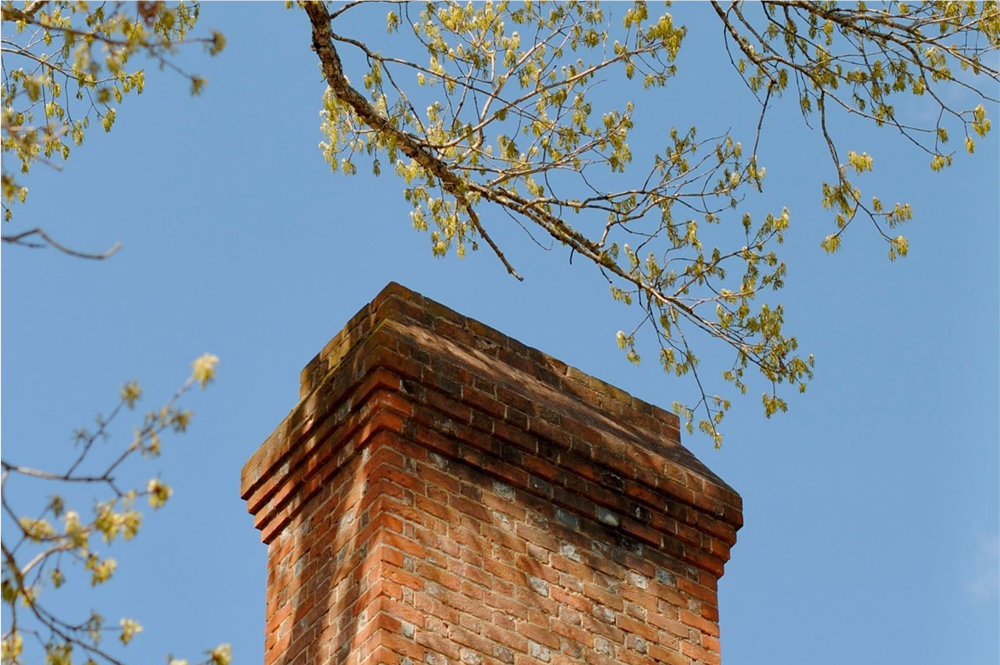
Chimneys are an important part of any home and, when functioning properly, can help keep a home safe and comfortable. Knowing the parts of a chimney, what they do, and how they should be maintained is essential for anyone who has one in their home. A roofing problem can appear as a chimney issue and vice versa. Seeking expert diagnosis is critical in keeping your VA or MD home safe. That is why the experienced roofers here at Shanco will go over what are the parts of the chimney and what they do.
Chimney Flue
A chimney flue is an opening in the top of a fireplace or furnace that allows smoke and hazardous gasses to escape safely from your home. The chimney flue also helps to draw air into the firebox, creating a draft so that fuel can burn more efficiently. That is why it is important to have it inspected to ensure that it doesn’t become a fire hazard.
What is the Purpose of a Chimney Flue Liner?
The purpose of a chimney flue liner is to protect the structure of your home from heat, sparks and other debris that could be released when burning fuel in your fireplace or stove. A chimney flue liner also helps to maintain an efficient draft for proper ventilation. It is essential for safety, as it prevents combustible materials within the walls from coming into contact with the flames, smoke and hot gasses produced by a fire or wood-burning appliance. By providing a safe route for these hazardous fumes to vent out of the house, it can help prevent carbon monoxide poisoning and reduce the risk of fires.
What is Chimney Flashing?
Chimney flashing is a vital component of any chimney structure. It is made out of vinyl, steel, or other materials that prevents water from entering the chimney and leaking into the walls or ceiling of your home. Chimney flashing ensures that rainwater and snowmelt can easily escape off to the sides rather than seeping inside, which could cause serious structural damage over time. The material used for chimney flashing must be durable enough to withstand extreme weather conditions, so make sure you choose the best chimney flashing for your local environment.
What Is A Chimney Crown?
A chimney crown is an essential part of the chimney structure. It sits at the top of the chimney and provides protection from water and snow damage to keep your home’s roof safe. The crown should be made of durable materials like concrete or metal that can withstand extreme temperatures and weather conditions. A properly installed chimney crown will not only protect against water infiltration, but it will also help divert snow as well to protect your chimney.
Chimney Damper
A chimney damper is a device that is used to regulate the flow of air from a fireplace, furnace, or other heating appliance so it doesn’t travel back into your home. This device operates like a valve, allowing you to open and close it depending on your needs. By closing the damper when the fire isn't in use, you can help prevent heated air from escaping up the chimney, thereby reducing your energy bills.
Smoke Chamber
A smoke chamber is an important component of a chimney, located between the fireplace and flue. It is designed to help exhaust gasses from fire travel up through the flue more efficiently. This helps to ensure that your fire burns safely and does not create an excessive amount of smoke in your home. The smoke chamber also helps to reduce downdrafts which can cause hazardous back drafting conditions in your home. A properly constructed and installed smoke chamber will help keep you safe while enjoying a cozy fire in your home.
Make Sure Your Chimney Is Well-Maintained
As you can see, the chimney is made up of a lot of important components. That is why you need to make sure that is well taken care of to make sure everything is in good working order. If something is damaged or not working properly, then make sure to contact your local roofing experts for a solution! An expert roofer, like Shanco, can diagnose if it's a roofing problem or if you need a chimney expert for repairs.
Tags
Subscribe to Shanco's Blog


Comments